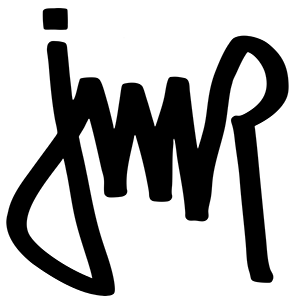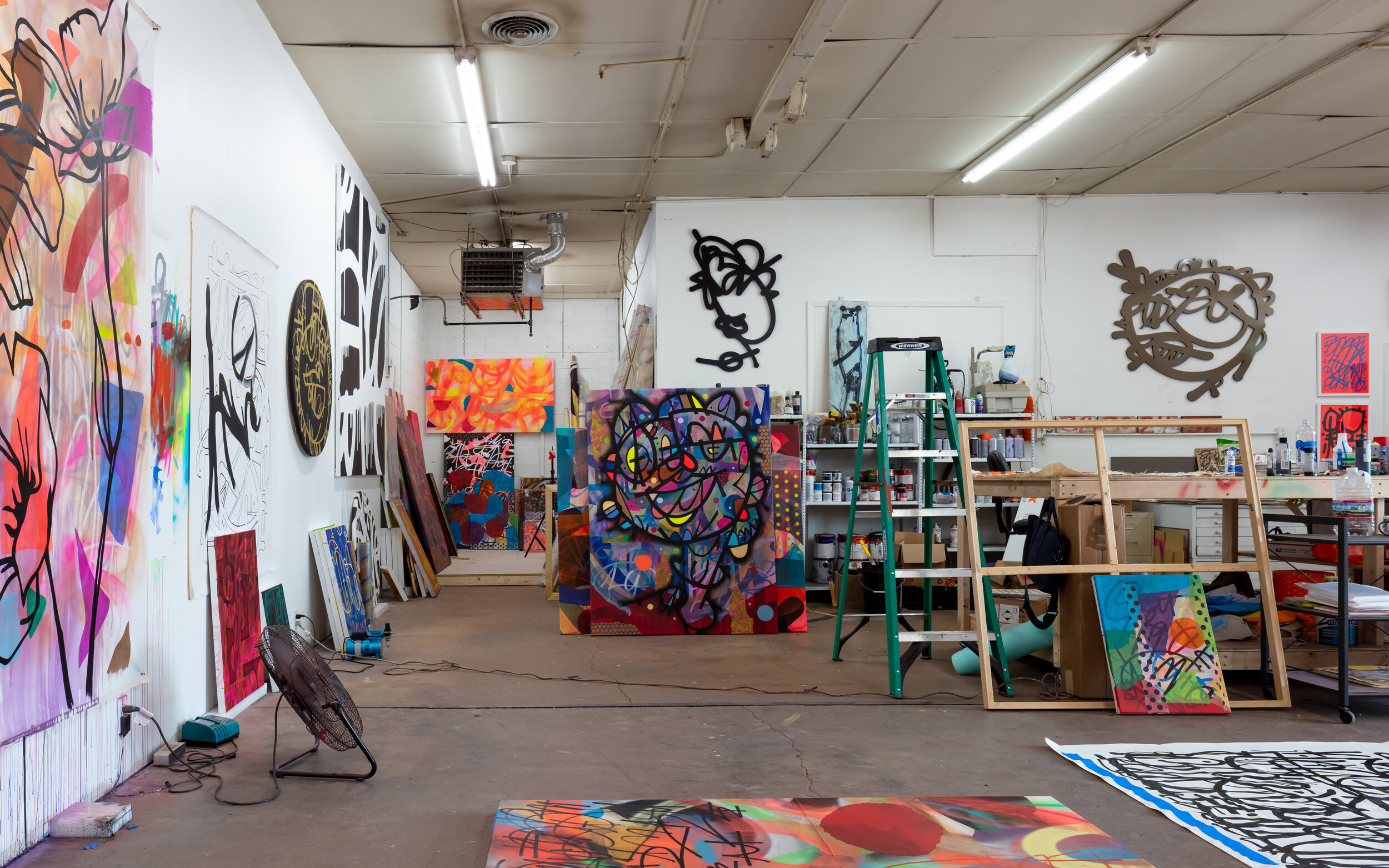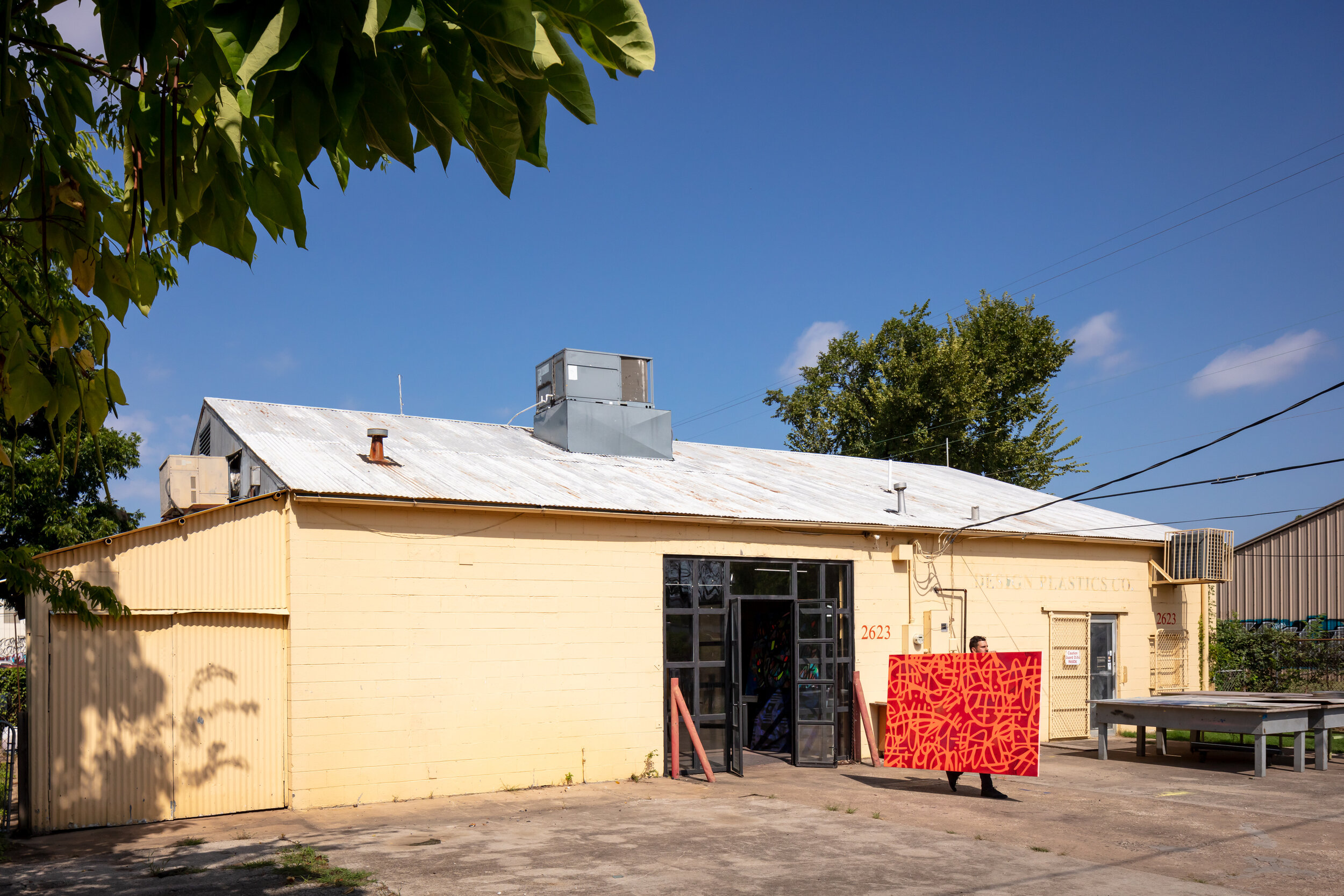Before setting out to work, I take stock to make the most of a fresh new week ahead. The coming days hold promising opportunities to continue this creative journey. I breathe deeply in a sense of gratitude and fortune, and a touch of luck. Maybe more than a touch.
My studio, exterior. As photographed by Kurt Griesbach.
I’ve only recently embraced routines.
This new phase in my practice began around May, when I left my stable role as a creative director at Citi Bank to focus on fine art full time. Now or never, right? I enlisted in the corporate world back in Spring 2020, when I noticed my paying creative projects drying up due to the pandemic. By May 2021 the situation was settling, if only according to the collective attention span and not the actual numbers. At some point in a man’s life, you gotta devote yourself to your purpose 100%. Is that not what we learned from all this? Now or never.
Still, some questions persist. How should an artist relate to the work they do to keep food on the table? I wonder how many of my Instagram followers know I’ve hustled my creativity out in a corporate capacity. The art establishment dotes over this narrative that artists should simply make art for the love of it, but I’ve known numerous people stuck in lives of quiet desperation, wishing they could make art while making a living.
Tuesday studio views. Photo by Kurt Griesbach.
There are real creative benefits gained from dipping into corporate backwaters. As I moved on from this office job, I noticed my time there actually exerted a fascinating impact on my practice, transforming studio time from a simple puff and paint into something more intentional. Since art school, I’ve chewed over the necessary balance between chaos and discipline in great art. As a spry twenty-something in Greenpoint, weed and wine may have fueled my paintings, but here in Dallas it’s meditation.
Just 10 minutes. Long enough to check in, settle the monkey mind. But not so long that the pressure to make something runs haywire.
That manic creative energy must be present to drive the work—it takes effort to convert an idea into an object through the painstaking process of execution. That energy creates breakthroughs, reconciling painterly loose ends left hanging across decades, only to resurface in the future and come together with ease. With that energy’s assistance, it’s like I knew what to do all along.
That energy must be directed—no starting out in fits and spurts, but allowing the impulses to come and go prior to choosing my path for each day. Sometimes that means working on a painting, and other times that means sweeping up the studio. Meditation is a daily survey of what I’m being pulled to do that day. It’s similar to laying every impulse out on the table like a hand of cards to assess which course to take. Breathe through it all, then decide.
Today is a chop wood, carry water kind of day. Building frames and stretching canvas. Five in total, 60” x 48”. The concept of having a practice helps one get back to their true nature. It clears the dust. I enjoy the carpentry of it, but I’ve always liked working with wood. The machinery, the cutting, the measuring, the bracing actual physical strength required to see a project through to completion.
Canvases in the studio. Photo by Kurt Griesbach.
Let’s say I’m a carpenter building a bookshelf. No one will debate the final product—it’s unequivocally a bookshelf. With abstract art, viewers often seek explanations about the work. Will this person understand what I’m getting at? Should I bother putting it into words? When somebody asks, “What does this mean?” I usually retort with a good natured “What do you mean?” Culture crafts misunderstandings about art from a young age. It doesn’t need to have a meaning. Carpenters never have to explain their handiwork. The fresh scent of cut wood earnestly compliments their sense of accomplishment.
I usually aim for standard 9-5pm days in the studio, broken up with runs to the art supply and hardware stores, so I can spend time with my family. Maybe that’s a benefit of my corporate life, not so far in the rearview mirror.
“How doers get more done.” More Tuesday studio views. Photo by Kurt Griesbach.
Leonardo himself once said “Paintings are never finished, only abandoned.” It’s hard to calculate an average number of artworks I complete per week. Some days I leave the studio feeling like a champion, other times like I’ve wasted the whole day. The difference is whether the ideas panned out. Maybe, for example, I need to learn more about my materials. So much of this practice is diligent tangible experimentation, really not far from a carpenter, however esoteric the output may be. At this point in my committed creative journey, I'm far enough along that I can no longer see the shoreline. I've already pushed off the dock. Now I have to keep the boat of my practice afloat, amongst sea squalls and beautiful sunsets alike.
Even on rough days, I keep building that boat one board at a time. My angles are eyeballed and my measuring is often guesswork, no matter how methodical and grounded my practice. The results are sometimes warped. But they are surfaces regardless.
Studio, with the day’s boat. Photo by Kurt Griesbach.





